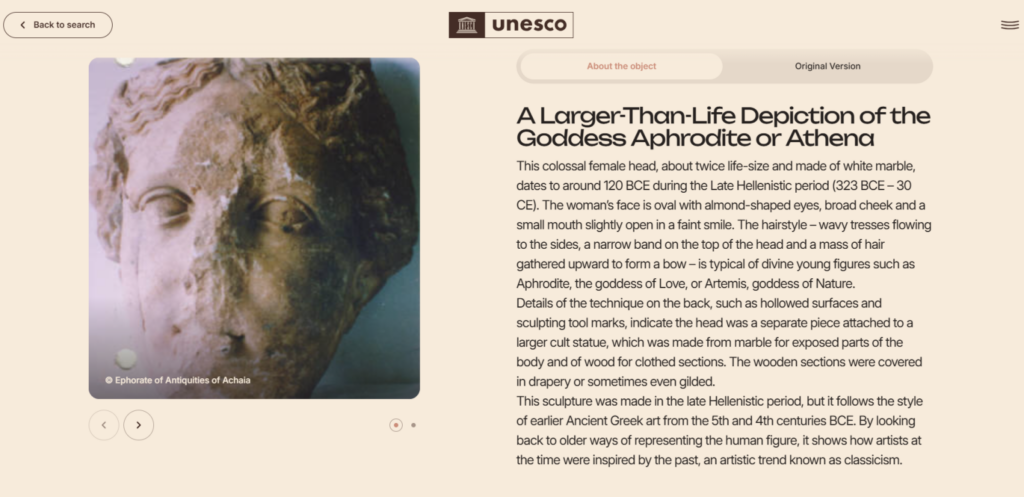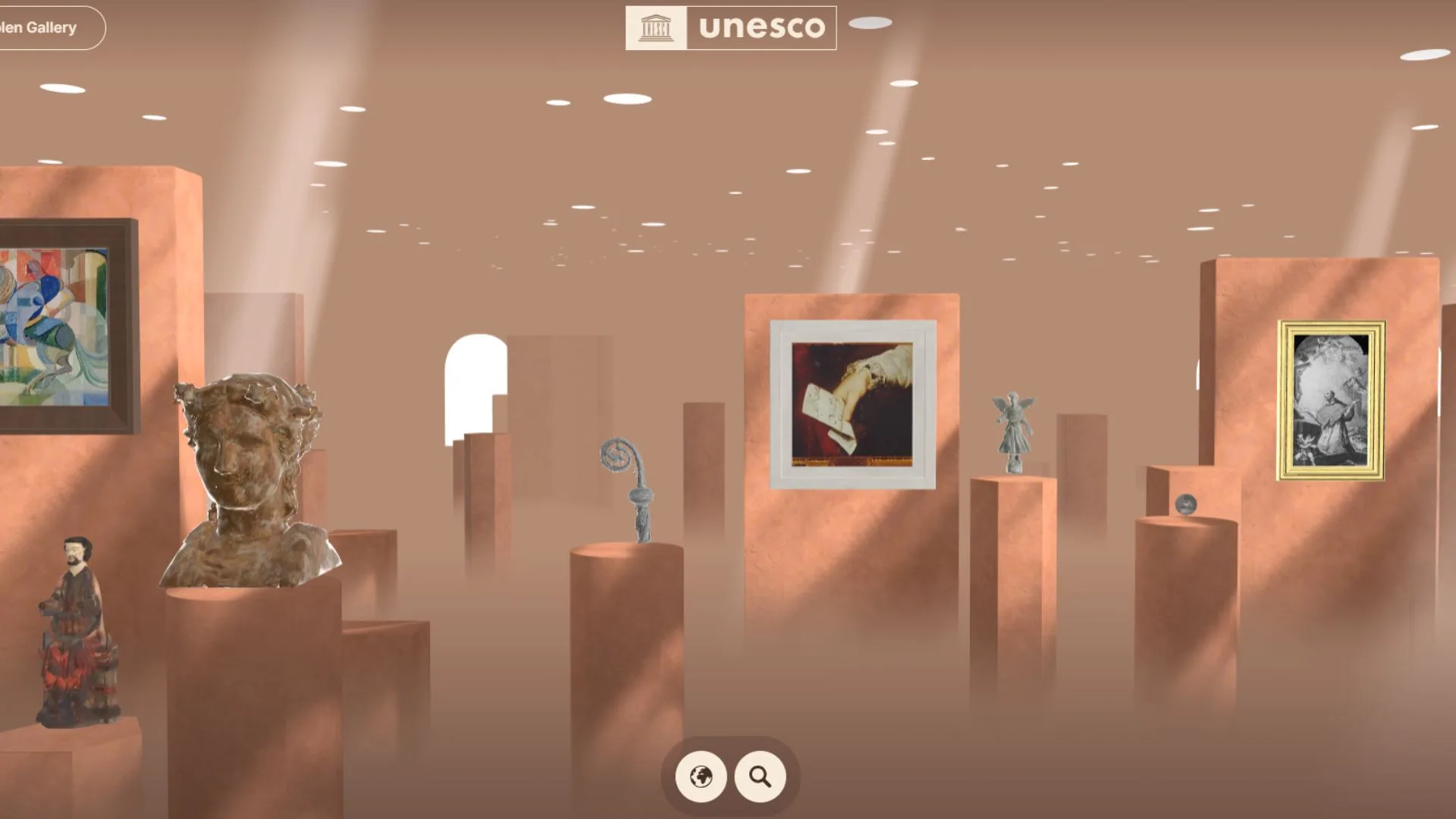UNESCO’s Virtual Museum of Stolen Cultural Objects, launched at MONDIACULT 2025 in Barcelona, offers a new way to confront cultural loss – including Greece’s long struggle to reclaim its stolen heritage, according to tovima.com.
The digital museum exists everywhere at once, displaying looted artifacts until restitution is achieved. Unlike traditional museums, its goal is to disappear. Each time a stolen piece is returned, its digital twin vanishes – a symbolic act of justice. “When an object comes home, a story can begin again,” reads the welcome message in the Return and Restitution Room.
Among the 277 registered artifacts, nine come from Greece, each telling a story of artistry and displacement. A bronze cauldron and figurine from Olympia recall offerings once made to Zeus; two Theran vessels from prehistoric Akrotiri trace early Aegean craftsmanship. The Cyclades contribute marble female figures from Naxos and Paros – icons of the islands’ minimalist beauty – alongside a limestone goddess statuette linked to ancient Thera. Most striking is a colossal female head from Aigeira, thought to depict Aphrodite or Athena, her serene smile surviving centuries of silence.

Designed by Francis Kéré, the virtual museum resembles a digital baobab tree – rooted yet global – where VR and 3D modeling bring displaced objects back into view.
For Greece, this project is more than preservation; it is a call for return. As UNESCO notes, restitution is about more than ownership – it restores “knowledge, cooperation, and renewed dialogue.”
Source: tovima.com
